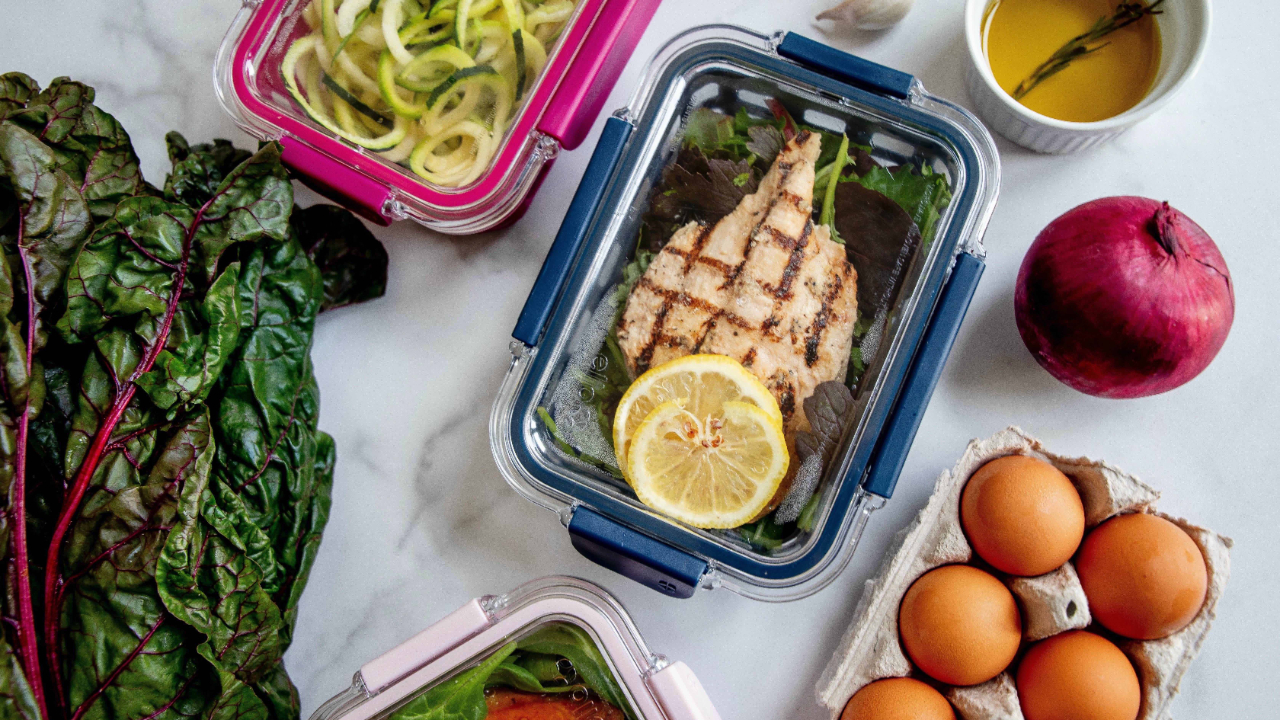
Let's get one thing straight - healthy eating doesn't have to be as complicated as we're making it.

With almost every single client I work with, the struggle is the same. There's so much information (and misinformation) out there these days that's it's made (what should be) the simple act of nourishing our bodies seem too complex.
I'm not trying to undervalue or dismiss the importance of nutrition - getting into the weeds is something I love and am interested in exploring with those needing a more involved approach.
Yet I can't emphasize enough the power of simply getting back to the basics.
Below are some key tips and tricks I share with my clients to help them fuel themselves properly and lay the foundation for a balanced, nourished diet!
Utilize my "Basic Meal Formula"
If you haven't yet checked out my Ultimate Meal Prep Guide or Meal Prep 101 Workshop, this is your sign! There, I share TONS of tips and resources to help you take your diet to the next level.
One of the specific frameworks I provide is my "basic meal formula" to help you strategically build balanced meals with ease. I also recently shared more info on this on my Instagram as well!
Don't discount the power of protein
Women especially tend to not focus on this macronutrient enough, and I can personally attest to the increased energy, results from my workouts, and satisfaction from meals that protein provides.
For specific ways to incorporate more into your meals, healthy swaps, and my favorite sources, be sure to check out my PROTEIN - What You Need to Know, Hacks, & More blog post.
Consider the "30 Plant Foods Rule"
I've been seeing this recommendation more and more over the years, and I find it to be a great rule of thumb to support diversity in our diet.
The reasoning behind this is that the microbes in our gut thrive off of different types of plant foods, therefore variety is actually more nourishing than eating a steady diet of a veggie or two exclusively.
If this number seems overwhelming, consider this:
ONE meal alone can cross off plenty of different plant foods. Take a pasta meal, for example. This could include brown rice pasta, tomatoes, garlic, onions, oregano, basil, and more. See? You'll likely get way MORE than 30 in one week if you have a varied diet.
Mix in the 4 "categories" of veggies
While we're on the topic of diversifying our diet, here's another way I like to think about it. As much as possible, I shoot to get in these different "types" of veggies -
- Greens - spinach, kale, arugula, collard greens, romaine, butter lettuce, etc.
- Cruciferous veggies - cauliflower, broccoli, Brussel sprouts, cabbage, bok choy, etc.
- Starchy/sweet veggies - sweet potatoes, potatoes, squash, pumpkin, corn, peas, beets, etc.
- Non-starchy veggies - zucchini, asparagus, eggplant, peppers, radishes, tomatoes, cucumber, celery, mushrooms, etc.
Don't forget the flavor factor!
Last, but NOT least - make your meals taste good. This seems obvious, but I see so many people fall into the must-eat-bland-chicken-breast-
I share more thoughts and ideas in my Meal Prep Guide, but overall, I encourage you to amp up your meals with sauces, spices, herbs, dips, dressings, etc. They make ALL the difference!
Find any of this info helpful? Let me know how you put it into practice in your own meals this week!
The latest goods, right in your inbox.
We hate SPAM. We will never sell your information, for any reason.


